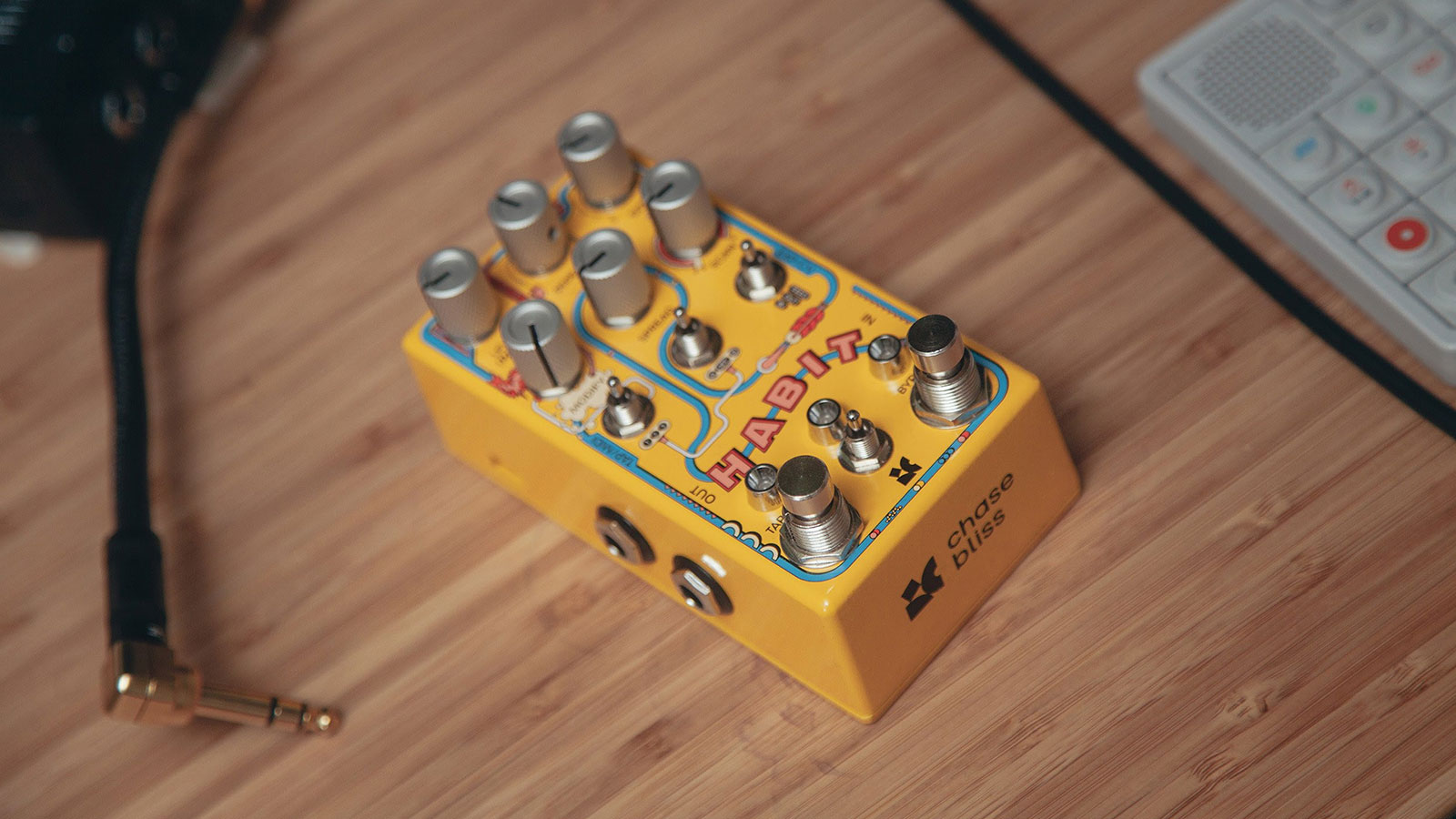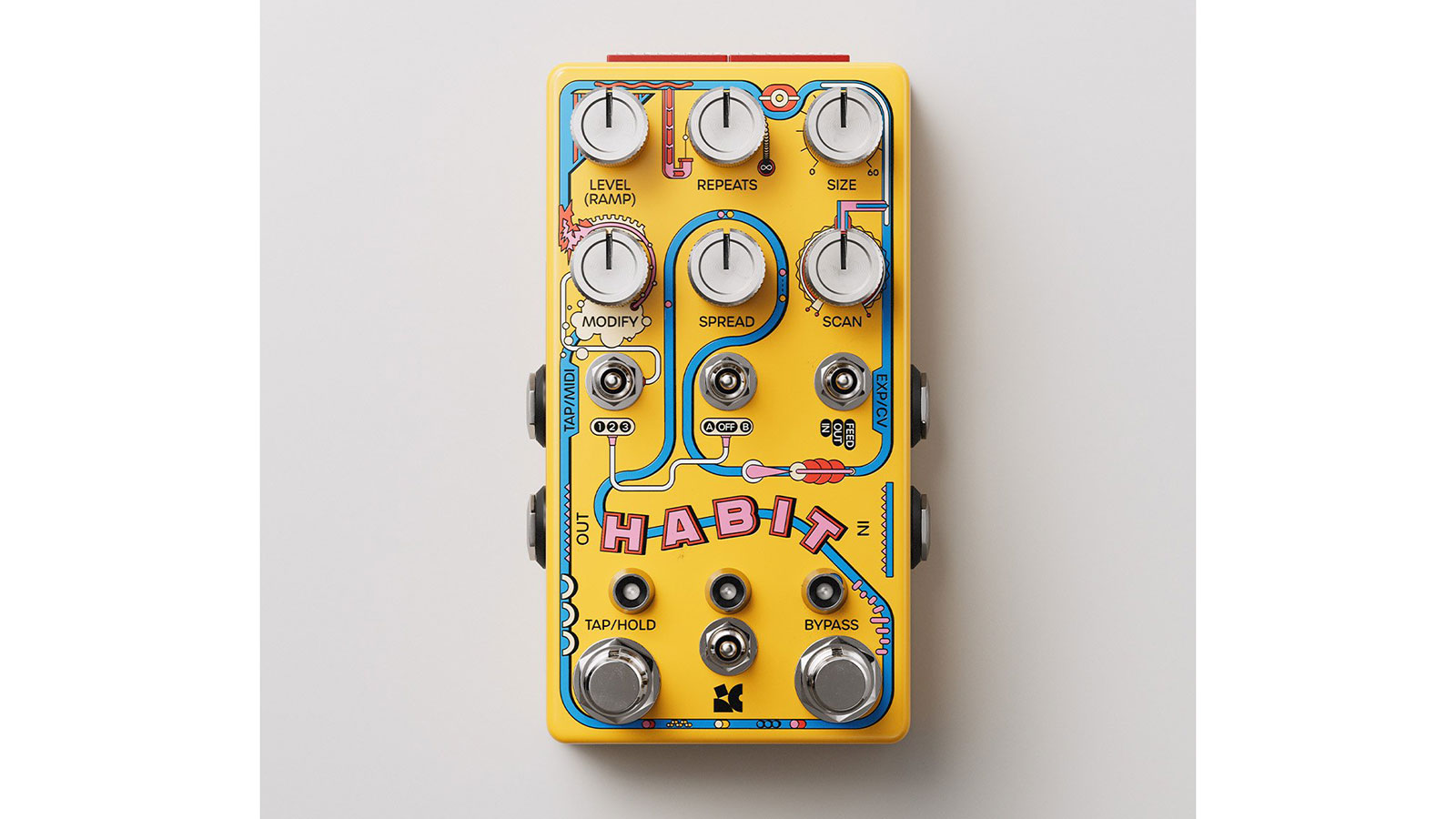Chase Bliss Audio unveils the Habit, a half-effect, half-instrument that even the company doesn’t quite understand
Musical sketchpad? Delay with a memory? Echo collector? Whatever this pedal is, we want it…

Chase Bliss Audio has unveiled an adventurous new pedal named Habit. The latest box from the innovative Minneapolis maker is a delay-based unit that it describes as a “freeform sampler and musical sketchpad”.
Habit can build traditional delays with the top three control knobs (level, repeats and size) and offers up to 60 seconds of delay time. However, what makes Habit stand out is that it records everything that goes through it on a three-minute buffer.
The player then has the ability to (randomly or manually) ‘scan’ and select parts of this audio, before deciding how it will be used and manipulated. It can be employed alongside your playing in the present, or to replace it.
In the process, the Habit offers a huge variety of ways to sample, recall and modify the signal and blend it with your playing, all of which leads to new possibilities in the use of delay, with unusual and musical results.
The second control line down opens up these possibilities, offering Modify, Spread and Scan dials. Modify manipulates the echos, Spread brings in a second echo that can be used simultaneously and Scan browses and selects echo segments from Habit’s memory.
The third control row offers three mini-toggles. ‘123’ and ‘A/ Off/ B’ are used to apply your choice of one of six ‘modifiers’ to the echos, which are stored in two banks (A and B), each with three settings.
The third toggle, In / Out / Feed, changes the routing of the signal in the box. Choosing In results in the selected modifier being repeatedly applied, creating weird and wonderful delay textures that continue to evolve.
Get The Pick Newsletter
All the latest guitar news, interviews, lessons, reviews, deals and more, direct to your inbox!

Out, in contrast, ensures that each delay sounds the same, creating a more consistent sound. Engaging the Feed toggle routes the output back into the input and records the outlandish results.
At the very bottom of the pedal is a Tap/Hold footswitch, a Bypass footswitch, and, sandwiched between them, a Preset toggle. The middle position is ‘live’ (reflecting the active positions of the controls), while the left and right positions can each store a preset.
Finally, holding down the Tap/Hold footswitch engages the Scan function, enabling you to quickly browse segments from the Habit’s memory (as you do with the Scan knob), while holding the Bypass footswitch engages a loop function.
If this mind-blowing optionality isn’t enough for you, Habit also offers MIDI, CV and Expression pedal connections for external control. And that’s before we get into the 16 dip switches on the top of the pedal, which offer further customization…
We’re not going to pretend we understand Habit in its entirety – and even Chase Bliss says it hasn’t figured it out completely.
“It’s a half-effect, half-instrument, and it has a workflow that doesn’t really exist anywhere else,” says Chase Bliss founder Joel Korte. “We had no idea how many things Habit would do in the end. We’re still learning them all truthfully…”
However, above all else, the brand says Habit is “fun” – and that will likely be its saving grace. “It goes a long way down but it’s not complicated, it’s just new,” summarises Korte.
Certainly, watching the demos, Guitar World is immediately tempted to lose half a day messing with the Scanning and Modifier functionality – and we suspect we won’t be alone in that.
For more information on Habit, head to Chase Bliss Audio’s official site.

Matt is Deputy Editor for GuitarWorld.com. Before that he spent 10 years as a freelance music journalist, interviewing artists for the likes of Total Guitar, Guitarist, Guitar World, MusicRadar, NME.com, DJ Mag and Electronic Sound. In 2020, he launched CreativeMoney.co.uk, which aims to share the ideas that make creative lifestyles more sustainable. He plays guitar, but should not be allowed near your delay pedals.
“Jimi was staying at a hotel in Times Square. He had his hair set in pink curlers and we would just talk band drama”: Electro-Harmonix founder Mike Matthews on befriending Hendrix, booking Chuck Berry and the birth of pedal culture
“Our answer to everything players have asked for and more”: Neural DSP’s Nano Cortex had one major drawback – but now it’s been addressed with a huge free firmware update that takes on Kemper and TONEX









